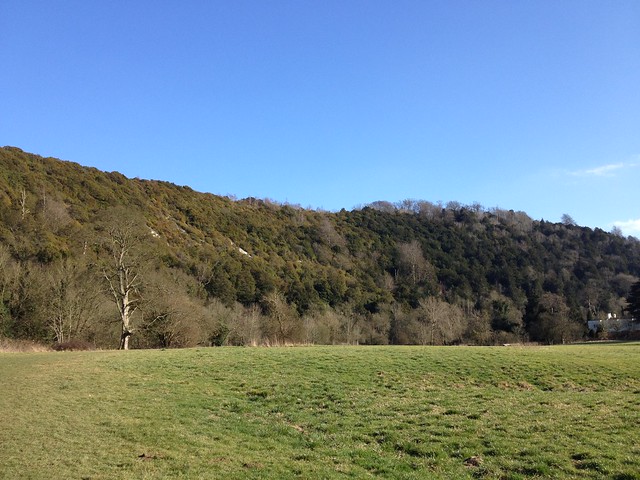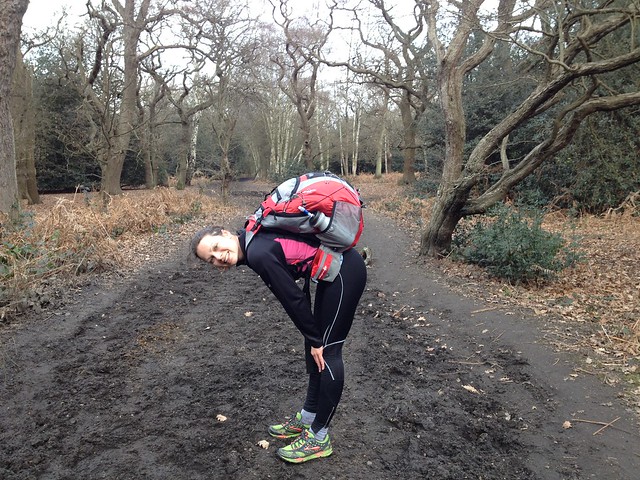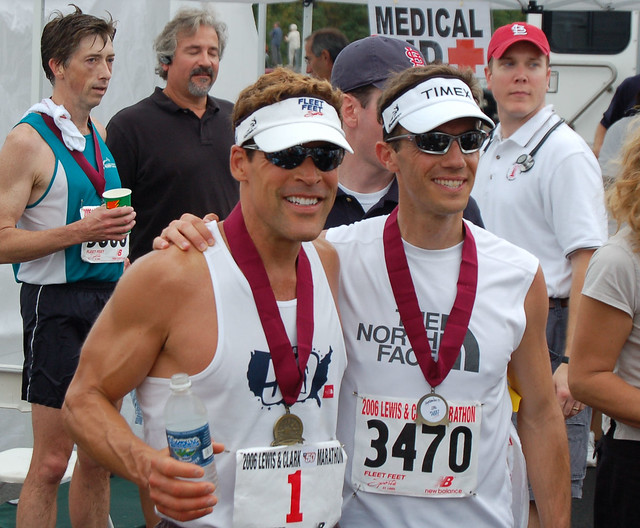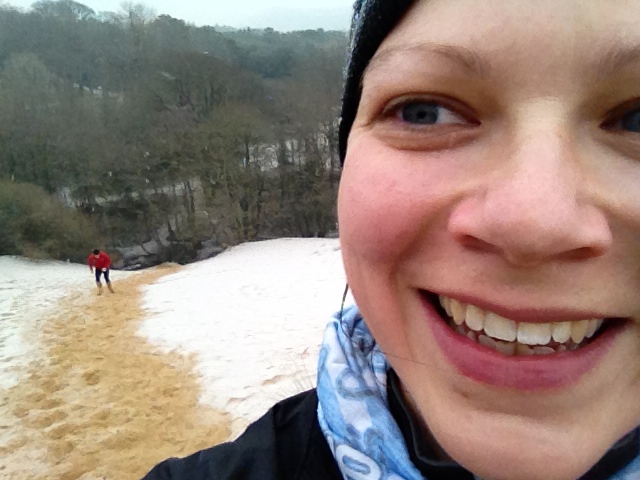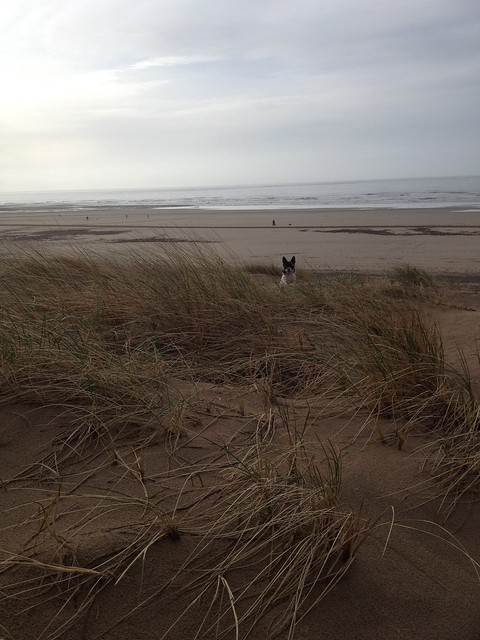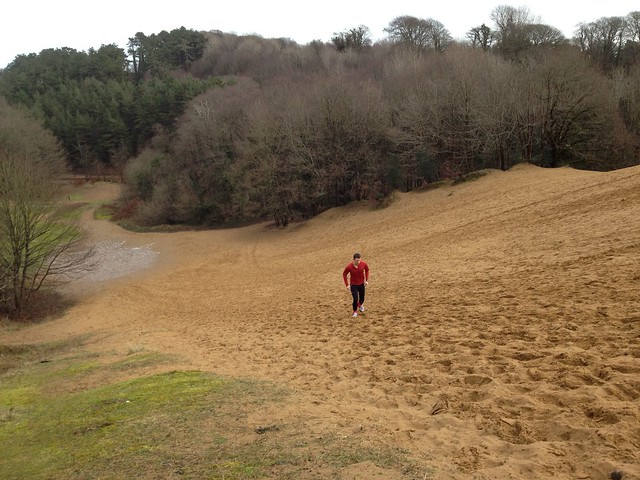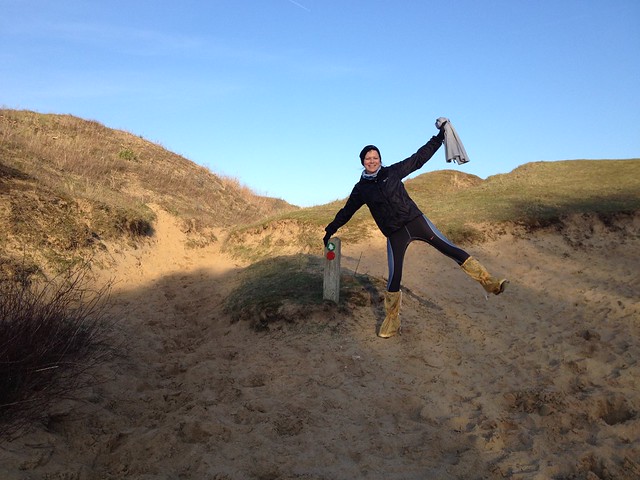 My kit all laid out
My kit all laid out
This is a biggie for all newbies and old timers of marathon des sables - what equipment to take!
Marathon des sables is a self-sufficiency race, with only water and tent provided. Everything else needed to survive, you must carry.
ESSENTIAL KIT
There is a set list of essentials you must carry with you including torch, compass, lighter, anti venom pump (gawd help us!) and survival sheet. The full list can be found on the
equipment page, with links to where I bought the different items from.
The biggies in the essential kit include:-
Sleeping bag - Down sleeping bags are lighter and warmer than synthetic sleeping bags, so choose this if you have some spare cash. It apparently can get extremely cold at night in the desert. An alternative, or extra, includes taking a silk sleeping bag liner to add warmth. This is also extremely light so won't add much weight to your pack.
I haven't decided on this yet so watch this space! And ideas welcome too...(I do get very cold easily so am wanting a well insulated one :-D)
Rucksack - I've gone with the
Raidlight Runner R Light 30L. I tried the
OMM Classic 25L as well but it didn't fit me as well.
The daddy of choice is the
Aarn Mountain Magic, but at a whopping £120 plus, it's also the most expensive! I've heard good things about it though. It loosk a little odd, but I've heard it's very comfortable.
It seems that most people end up carrying 10 kilograms plus in their bag. Some of the elites get it down to about 7 kilograms. A 30 litre rucksack is about the right size for beginner MDSers who will end up carrying 10kg+. Some bags do reduce in size, which if you are worried about the bag flapping around towards the end stages (when you will have eaten most of your food), this could be a good option.
Other essentials include:-
Headtorch - I bought the
Petzl headtorch as it's really lightweight too. Headtorches are a must over regular torches as you will use it on the long stage to see. They are also very helpful around the camp when you may need two hands. Don't forget spare batteries!
Compass - Kind of feel I should learn how to actually use a compass if we're required to carry one, just in case I have to use it!
Knife - Again lots of choice here. The more lightweight the better. I've gone for
Victorinox Jelly Swiss Card, as it has a number of other useful bits and bobs like scissors and tweezers, and and is lightweight. Scissors are also going to be far more useful for cutting tape, food bags etc.
NON-ESSENTIAL KIT
The non essential kit is the tricky part as there is a huge range of stuff out there that you could take, plus a huge range of choice within items.
Also it's whether that stuff is really needed or not as it's all got to be carried by your good self!
The big items which need some thought are:-
Footwear - this is one of the most important buys so I've dedicated a post just on
what footwear to wear in marathon des sables. I've gone for
Brooks Cascasdia 7 - maybe slightly different to what seems to be the shoe of choice - the
inov8 Roclite - but I tried them both, and the Brooks just felt better for me. I run in Brooks on the road too. That plus the fact Scott Jurek wears them, but I figure he's probably paid to do that!
My only concern at this stage is that the Roclite's gave more toe protection from rocks, but on the negative they did seem to feel more solid and chunky than the Cascadia, so I hope I've made the right choice for me.
I've tried them out on a number of runs. They feel great - a little big, but they are a size larger, so I hope they will do me justice.
Gaiters - I've gone for the longer gaiters from
Sandbaggers. Equally good and silly-looking are the
Raidlight shorter version. I just figure, the higher up the gaiter, the less chance the sand has of getting in.
The gaiter needs to be somehow fixed to your trainer. I've posted on this
gaiter issue. I've resorted to using heavy duty glue to stick the velcro onto the trainer. I cut the velcro into 5cm pieces and stuck it along the margin of where the fabric started. I'm going to trial this first before attempting to then stitch the velcro on firmly as well, as I think glue on it's own will not suffice for a week in the desert.
Even though they aren't technically an essential item, I would have thought everyone would be wearing them. Stupid not too. Foot care is just as important as training. I just can't imagine how devastating it must be to not finish because your feet are torn up, rather than you have not trained well enough.
Hydration system - There are a few options here - in bag or bottles, and if bottles, whether they are kept to the front or side of your rucksack. I've not heard great things about the bag option, as it becomes irritating and time wasting to keep stopping and refilling at the checkpoints. I also think hygiene wise, bottles are safer.
I'm sticking with the bottles. I've got them set up in the side holders at present. I just need to decide whether to go with the frontsack or not (see below). I find the bottles at the sides of the rucksack a little annoying. They tend to make me fall forwards and hence I get a bit of lower back pain.
I also am struggling a little with the Raidlight bottles. They have a long straw part of them which I keep pulling it off rather than just opening the vent. Must be my brute strength! I also had one of them leak on me on the first trip out with them, but since I have had no problems with them, and nothing that a bit of gaffer tape wouldn't sort out. I may try these too.
Frontsack - I've yet to try this out, but my other half has one, so I am going to trial this. I've heard a mixed bag of opinion about the
frontsack. Some say it gets in the way. Others say it's much more convenient for snacks and water on the move. I must admit carrying the bottles on the side of the rucksack makes getting snacks out of the side rucksack pocket a little awkward, so the frontsack may end up being a preferable option for me.
Sleeping mat - Another item I've not yet decided upon. I was umming and arring about whether to take one or not, but have decided yes I am, as it's a little bit of luxury I think my body will appreciate. The mat also helps keep your body warm too. The only problem is I don't think I can afford the daddy of them - the
Thermarest NeoAir small, so I may go for
Thermarest Z Lite. Though the air versions are lighter, they also have the disadvantage of being able to pop! So it's another thing to consider. The closed cell foam mats are a little more bulky but can attach under the rucksack if necessary.
Pillow - Not taking.
Walking poles - I haven't decided on these yet. I've read varying reports on their usefulness. Some love them as they help take the strain off your legs, especially going up and down the dunes. Others say if you haven't trained with them (I haven't) then don't use them.
CLOTHES
Running top - Ooh well I enjoyed buying all this stuff. The stuff above I tried to get excited about, but failed. But clothes?! Oh yes.
Anyway, so again there is a huge choice of what to wear and as to stereotype I ended up with a pink
Under Armour top.
Under Armour and
Montane seem to be the labels of choice, though I think as long as it keeps you cool and is comfortable, you'll do fine.
The main decision to make is whether you want a tight running top or baggy, and long or short sleeves. I've gone for baggy, as I usually like running wearing baggy, not tight clothes. I've also gone for short sleeves, as I don't burn easily and think this will also help to keep me as cool as possible.
I'm still unsure whether to suck it up on one top, or take two.
Running bottoms - More pink. I've gone for Under Armour again, but am trialing both
compression and
loose fit shorts. Again I'm not sure whether to take both, or just one pair, and if one pair, which one. I think compression shorts are less likely to cause any chafage, BUT..only as long as no pesky bits of sand get in there. Whereas loose fit shorts may cause more chafage, but allow sand to be more free roaming.
Again the main decision to make is the same as the tops - short, or long, tight or baggy. Most people I've seen pictures of opt for shorts, for heat reasons. The baggy/tight option is down to choice.
Socks - Another biggie in my opinion, as it's all about the feet! Time after time, I've seen rave reviews about
Injinji toe socks. Look odd, but work really well to prevent toes chafing against each other.
I've also gone for a pair of
Bridgedale Trail Light and
Hilly Two Skin to go over the top.
The idea of wearing two pairs of socks is twofold. First, it helps keep those pesky sand granules away from your feet as it adds yet another barrier. Second, it gives some choice - so if your feet swell, you can take a pair off, but they give you an extra layer in the beginning to help with the extra large shoe size worn! I'm going to take at least 2x pairs of each sock type.
Windstopper - Just taking an old lightweight windstopper.
Underwear - Nil. Eek!
Buff - Another essential in my opinion. Covers a multitude of tasks including hat, sand shield in case of sandstorm, eye mask for the nightime, and neck guard in the mornings or evening if it is cold. Plus it can be used as a snot guard during the daytime. Pleasant. The thought of wearing a snotty hat...anyway.
Hat - I'm just taking a white cap with neck guard to help protect me from the sun.
Sunglasses - This is a tricky one for me as I wear glasses. I'm currently researching getting prescription running sunglasses that don't cost a fortune and that I can swap inserts with normal glasses.
Bloc seems to be a good option. There's also the option of normal running sunglasses and contacts but my eyes can't take many hours of contact wearing. I also need to weigh up (excuse the pun) the weight of taking the different choices.
Camp top - I do have a ratty old
North Face jumper but may treat myself to the luxury of this lovely soft, lightweight and warm number from
Montane.
Camp bottoms - I'm just taking an old pair of very lightweight and windproof (so warm) Nike trousers.
Slippers - I've heard nice things about
Baffin slippers so may well treat myself to a pair of these. They can also double up as shoulder pads for the rucksack. Otherwise flip flops can do the job, but may well be sore if you have blisters around the strap area.
CAMP EQUIPMENT
Stove - I've gone for
Esbit Titanium folding stove as it's lightweight (see a theme here?)
Lighter fuel - This has to be ordered to pick up once you are in Morocco.
Cooking pot - Esbit again.
Food - I've already written a short post on what
foods I'll be taking for Marathon des Sables.
Spork - A fork and spoon in one. Genius!
Sewing kit - To sew up torn bag, clothes, gaiters etc etc
MEDICAL EQUIPMENT
Anti bacterial gel/wipes - An absolute essential. I'm going to be scrupulous with using this. You can buy set kits which is easy but more expensive. I'm going to cobble my own together which will include..
Tape - Another biggie, and an essential. Blog post about foot taping to follow.
Suncream
Earplugs
Vaseline
Toilet roll
Insect repellent
Dressings
Compeed
Talcum powder
Immodium
Diaralyte
Ibuprofen
Anti venom pump
Bodyglide
Alcohol pads
I'm also going to look into these items:-
Glacier Gel
Blisto-o-ban
Engo
LUXURIES
iphone - I'd like to blog/moan/cry/laugh along the way and take some cool pictures and videos so this is a must for me. I've bought a protective cover from
Speck to help prevent sand from troubling my iphone.
Solar charger - I don't think my iphone will last a whole week, so I've also got a solar charger from
Power Chimp. I haven't trialled it out yet, but will check it works okay before I take it.
Toothbrush and toothpaste - I'm drawing the line at not taking this. I'm not taking any deodorant as there just is no point but I would like at least one part of my body to stay in a reasonable state of cleanliness, so it will have to be my teeth. And smile!!
I've created a full list of what non essentials I'll be carrying on my
equipment page with links to where I bought them from.
Post race I'll let you know how they fared.
Below is another list of other stores which may stock some of the equipment needed. Your bank manager will be pleased with you.
Likeys - Also Likeys have a useful desert kit list with recommendations for what to choice for each item.
Racekit
Racing the Planet
Wiggle
Outdoor Warehouse

